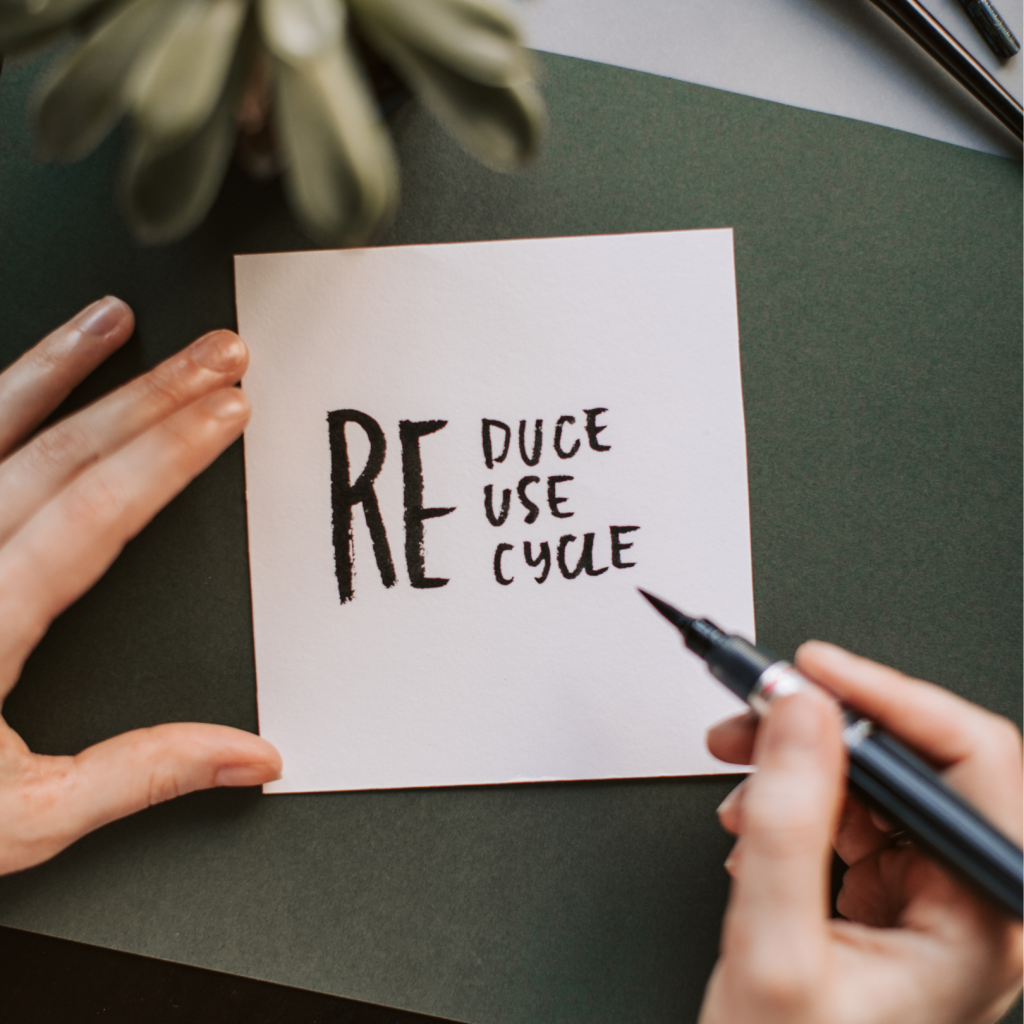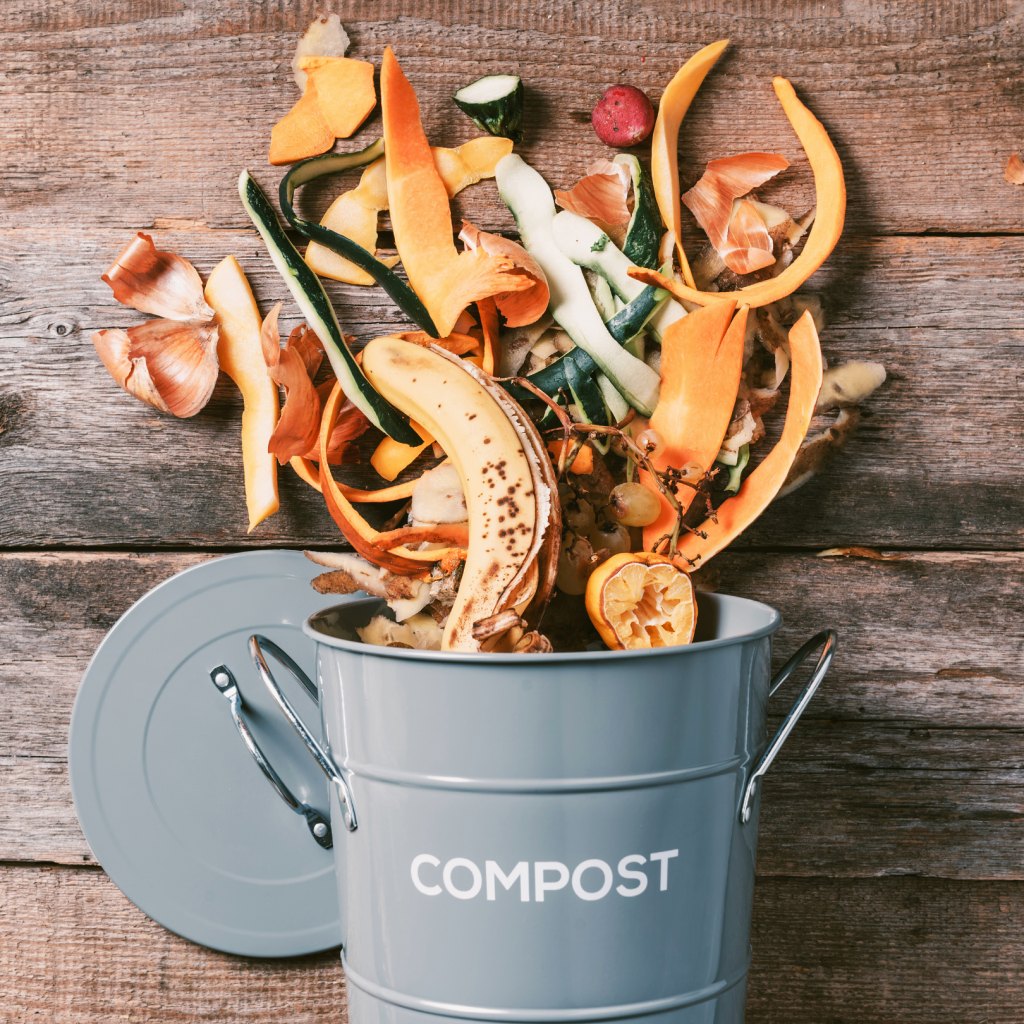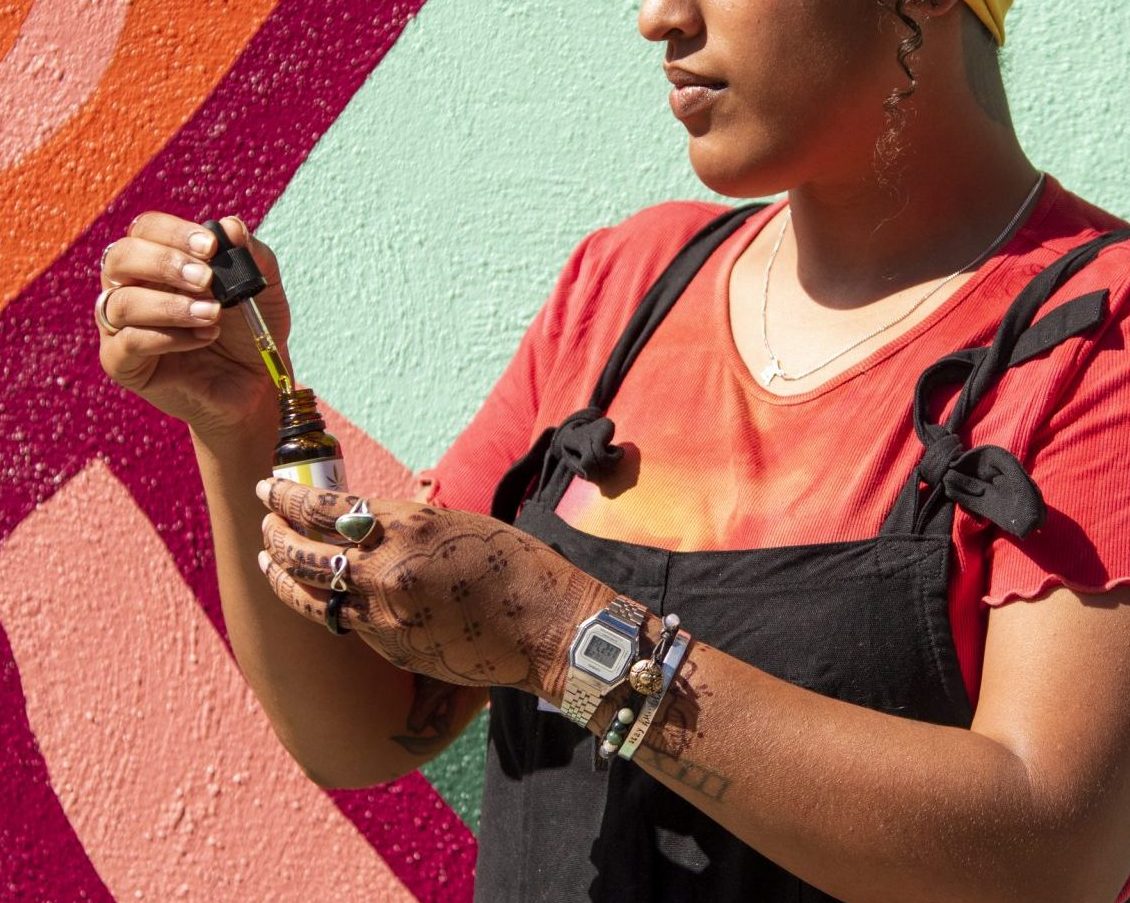Spring cleaning should do more than just declutter and refresh your space. This year, consider setting an environmental resolution to introduce eco-friendly ideas into your daily life and strive to live a zero-waste lifestyle.
Overconsumption is not new. For centuries, people of power and wealth have deliberately wasted food, clothing, and resources to demonstrate their abundance and success. Sadly, that showing of eliteness is terrible for the environment.
For example, food waste contributes to the excessive use of fresh water and fossil fuels. Also, when food decomposes, it produces methane and other carbon compounds, which play a role in global warming and climate change.
What can you do to lessen your impact on the planet? Let’s look at how to use, maintain, and dispose of products sustainably.

From Idea to Reality: Practical Ways for How You Can Help The Planet
The main sustainability best practices to keep in mind are simple.
- Reject what you don’t need.
- Reduce what you do need.
- Re-use whatever you can (recycling and upcycling).
As you aim to do all the above, it can help to ask yourself a few questions:
- Materials: What is it made of? Does it include recycled material? What about toxic substances?
- Energy content: How much energy went into making it?
- Delivery: How much energy was used to transport the product?
- Efficiency: How much power does the product use when operating?
- Durability: Will it wear out quickly and need to be replaced?
- Disposal: Will it create pollution when you dispose of it? Can the materials be recycled?
- Packaging: Is it wrapped in packaging that you must throw away?
Tips for Going Green at Home
1. Precycle and Recycle
Precycling ensures resources can become future resources rather than wastes accumulating on the earth and in the atmosphere. Precycling builds the industrial, social, environmental, and economic circumstances for old products to end up as new resources.
Recycling is a way to precycle; it stops materials from being left out to pollute nature or sent to a landfill. Thanks to programs like TerraCycle (which we love and use in our workspace), just about everything can be precycled and recycled.
Precycling and recycling goods will help move you toward “zero waste” and a circular economy.
How do you precycle? Avoid purchasing “rubbish” and seek new homes for materials you no longer need. (Facebook Marketplace, anyone?)

2. Zero Waste Kitchen Tips
Since 1974, food waste per person in the United States has increased by over 50 percent. Roughly 40 percent of food in America never gets eaten. On average, Americans throw out 25 percent of the food they bring home. Americans waste 160 billion pounds of food each year — more than enough to eliminate world hunger.
Decreasing production is the most effective way of reducing the environmental impact of wasted food and packaging because it stops unneeded materials from being created in the first place.
Feed People, Not Landfills
- Reduce – Use less, or do without.
- Reuse – Containers and repurpose food scraps instead of tossing them.
- Recycle – Compost leftover food scraps.
To work towards becoming zero-waste…
- Buy locally grown food to reduce the environmental impact of packaging and transporting food. P.S. You earn brownie points if you grow it yourself!
- Preserve your own food – Freeze, can, pickle, smoke, dry-freeze, or dehydrate meats, fruits, and veggies.
- Invest in reusable containers and buy foods in bulk.
Those actions will help reduce the amount of food reaching landfills, save money, and help communities. When we throw food away, it wastes not only the food itself but also an abundance of resources — water, energy, land, and labor — that went into growing, preparing, and distributing it.

3. Other Earth-Friendly Home Tips
Did you know that changing household behavior has the power to reduce emissions more quickly than industrial output?
Ask yourself:
- Can I go without the item?
- Can I make it myself?
- Can I buy it secondhand?
Consider the environmentally friendly suggestions below.
- Do it DIY – Do right by the planet when you do your spring cleaning! Make your own cleaning and laundry ingredients to reduce plastic consumption. This also helps keep your pets and family safe from harmful chemicals. Invest in reusable glass decanters for laundry and kitchen goods.
- Donate – You can find opportunities to donate almost anything. Prioritize giving to local food banks and shelters, then find charities to donate clothing, furniture, and household items.
- Get thrifty – Shop at second-hand shops to reuse what others no longer need. Bonus: You get the satisfaction of bringing home unique treasures.
- Track your habits – Make a list of everything you throw out and assess what can be recycled or repurposed instead. Writing down your habits will make you conscious of your usage and waste trends, which is the first step on the path to living your best green, eco-friendly life.
- Reduce energy use – Turn off the lights when you leave a room. Unplug appliances when not in use.
- Drive less – Carpool and use public transit when possible.
4. Tips for Choosing Environmentally Friendly Wellness and Beauty Products
You can even help the planet by choosing your wellness and cosmetic products more carefully.
- Avoid buying things you don’t need.
- Shop smart by rejecting non-recyclable products.
- Don’t buy products with harsh chemicals or artificial ingredients.
- Say “NO” to single-use plastics.
- Buy from certified B Corporations.
- Look for cruelty-free manufacturers.

Walking the Walk: Our Efforts to Help the Environment
As a certified B Corporation and Leaping Bunny-certified cruelty-free company, Hempfield Botanicals is part of a global movement to use business for good. We hold ourselves to the highest standards of social and environmental performance, safety, transparency, and accountability.
We create our products in a cGMP (certified Good Manufacturing Practices) production facility. All our hemp-based products contain only natural, cruelty-free ingredients. We package all products in post-industrial, biodegradable resin.
Every day, we recycle everything we can around our office and production area. We are working our way toward recognition as an official zero waste company via achieving SCS Zero Waste Standard certification. That certification verifies a company diverts waste elements from entering landfills by using any of the following methods:
- Reuse
- Reclamation
- Prevention through redesign
- Recycling
- Composting
- Waste-to-energy initiatives
Let’s Make a Difference Together
“Going green” is more than a trending buzz phrase. It is a growing, collaborative effort to be a positive force at all levels — individuals, families, communities, and the environment.
While you don’t have control over the poor decisions of others (people and corporations), you do have the power to improve your own habits. Just like the saying, “You are what you eat,” “Your environmental impact is what you throw away.”
Shop smarter, reduce, re-use, and recycle whenever possible.
It doesn’t take all the time in the world to save the planet. A little attention and effort by all of us will help shape change to benefit the greater good.
Sources:
https://www.epa.gov/sites/default/files/2015-08/documents/reducing_wasted_food_pkg_tool.pdf
https://www.fao.org/fileadmin/templates/nr/sustainability_pathways/docs/FWF_and_climate_change.pdf
https://scholarship.law.vanderbilt.edu/cgi/viewcontent.cgi?article=1184&context=vjtl
https://heinonline.org/HOL/LandingPage?handle=hein.journals/vantl49&div=41&id=&page=

